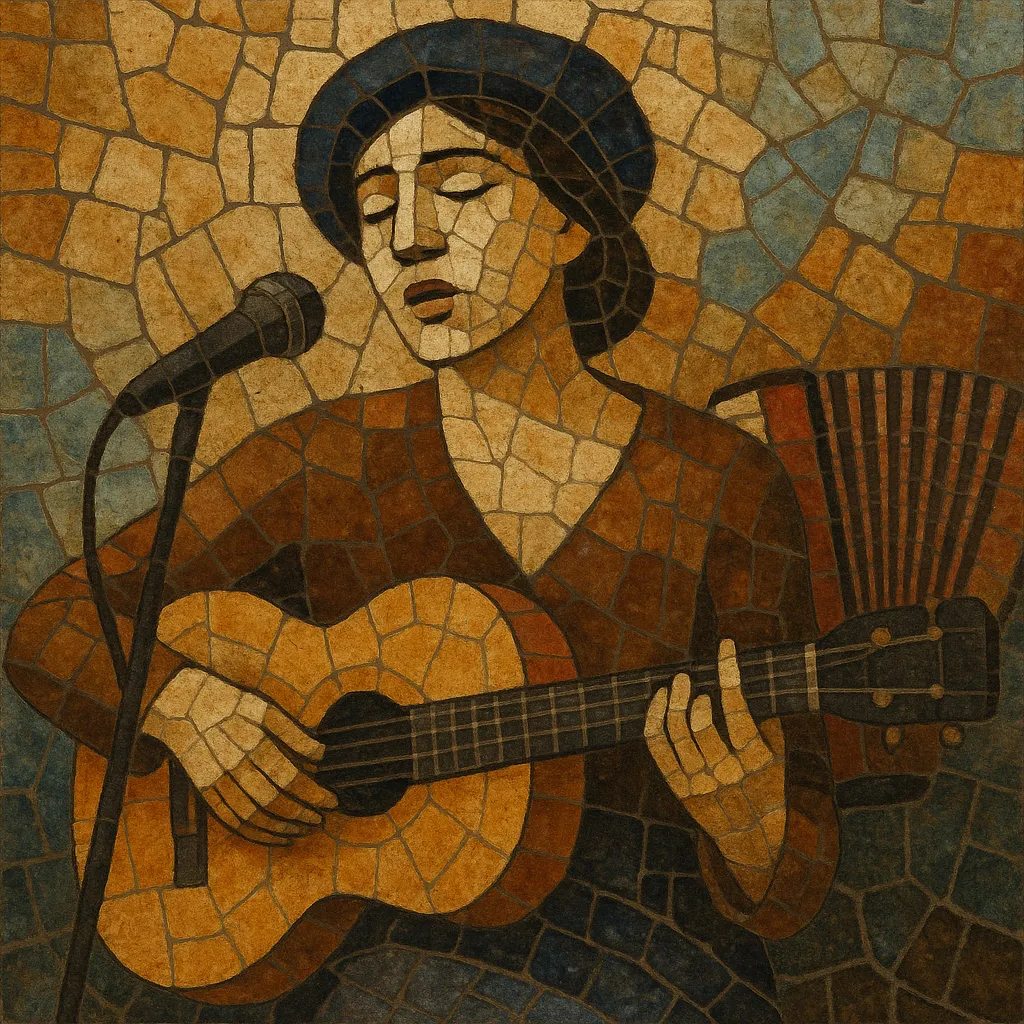Chanson is the French tradition of lyric-driven song, rooted in the Renaissance polyphonic chanson and later shaped by cabaret, musette, and café‑concert culture. It privileges clear diction, storytelling, and poetic text, with melodies crafted to fit the natural prosody of the French language.
Across the 20th century, chanson evolved into an intimate, singer-focused art: sparse accompaniments (guitar, piano, accordion, small ensemble) support expressive vocals and nuanced narratives. Themes range from love and loss to social observation and existential reflection, often delivered with wit, irony, or tender melancholy.
The term "chanson" originally denoted French-language songs in the Middle Ages, including epic "chansons de geste" and courtly repertories. As music formalized, Ars antiqua, Ars nova (e.g., Guillaume de Machaut), and Ars subtilior traditions fostered notated, multi-voiced chansons. In the Renaissance, composers such as Clément Janequin and Josquin des Prez popularized the polyphonic French chanson, establishing a foundation of text sensitivity and melodic contour that would echo for centuries.
During the 1800s, chanson moved from courtly and salon contexts to popular venues. Cabarets and café‑concerts in Paris (e.g., Le Chat Noir) nurtured a performance style that emphasized character, gesture, and narrative punch. Musette waltzes and accordion timbres colored the urban soundscape, while early recording technology began to disseminate chanson nationwide.
From the 1930s to the 1960s, chanson entered a golden age with iconic interpreters and songwriters: Édith Piaf, Charles Trenet, Yves Montand, Georges Brassens, Léo Ferré, and later Jacques Brel and Barbara. The focus settled on the solo voice as storyteller, supported by guitar, piano, small orchestras, or jazz-inflected ensembles. Lyrics became more literary and philosophical, giving rise to strands such as chanson réaliste and chanson à texte.
In the 1960s, yé‑yé pop and international rock currents interacted with chanson’s lyricism, while the singer‑songwriter model spread globally. In the 1970s–1990s, artists blended chanson with jazz, orchestral pop, and electronic textures, maintaining emphasis on wordcraft and delivery.
Today, chanson continues through both classic interpreters and modern hybrids that merge it with indie pop, electronic production, and filmic arrangements. Its core identity—poetic French text, clear vocal line, and expressive storytelling—remains a living influence in Francophone and international singer‑songwriting.


